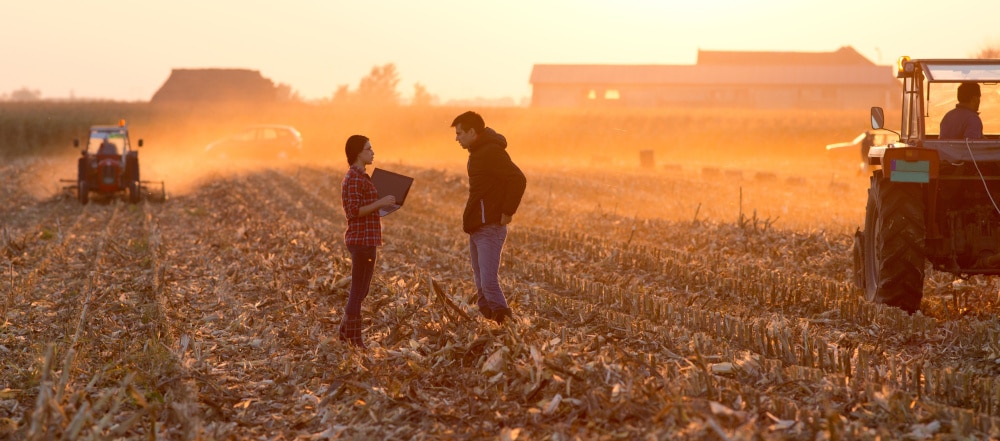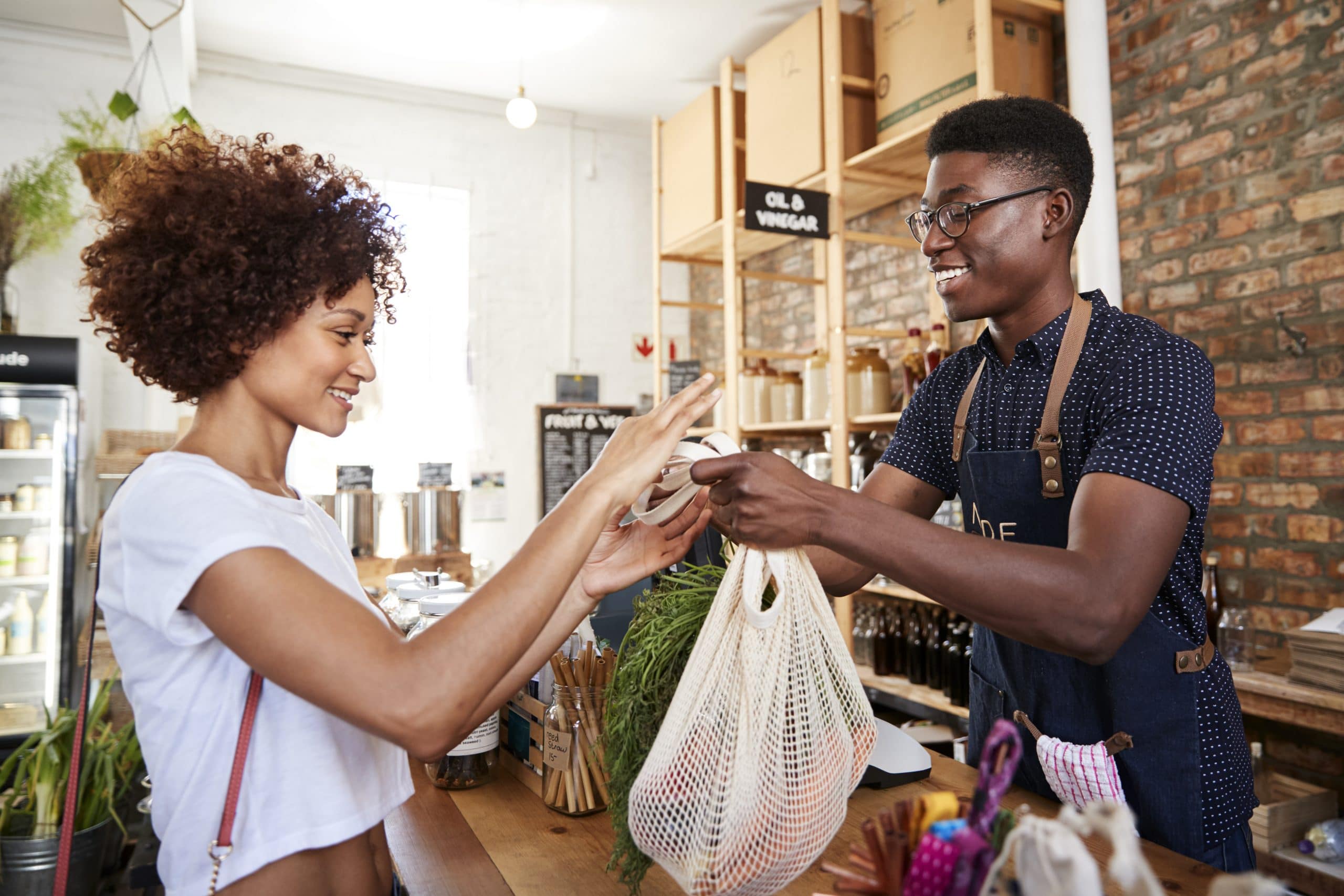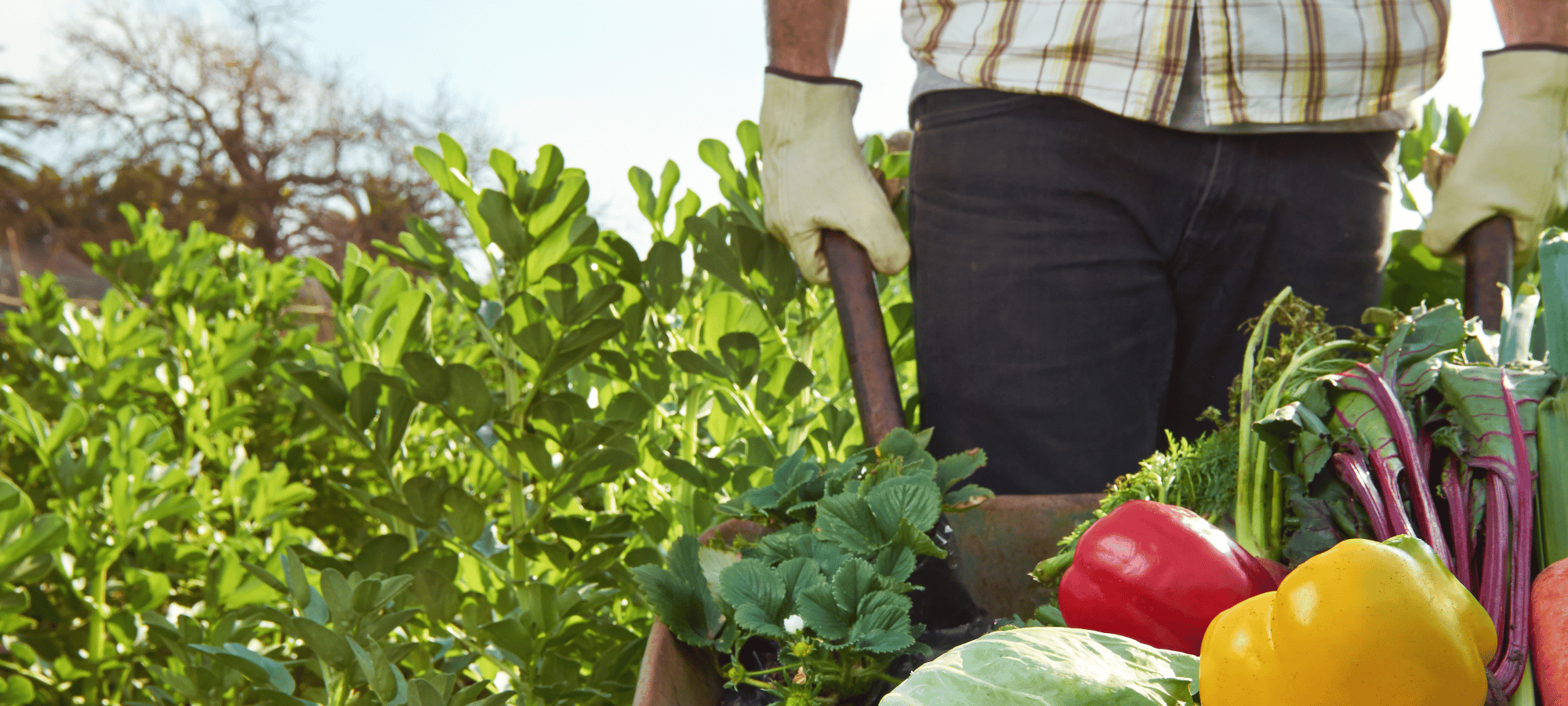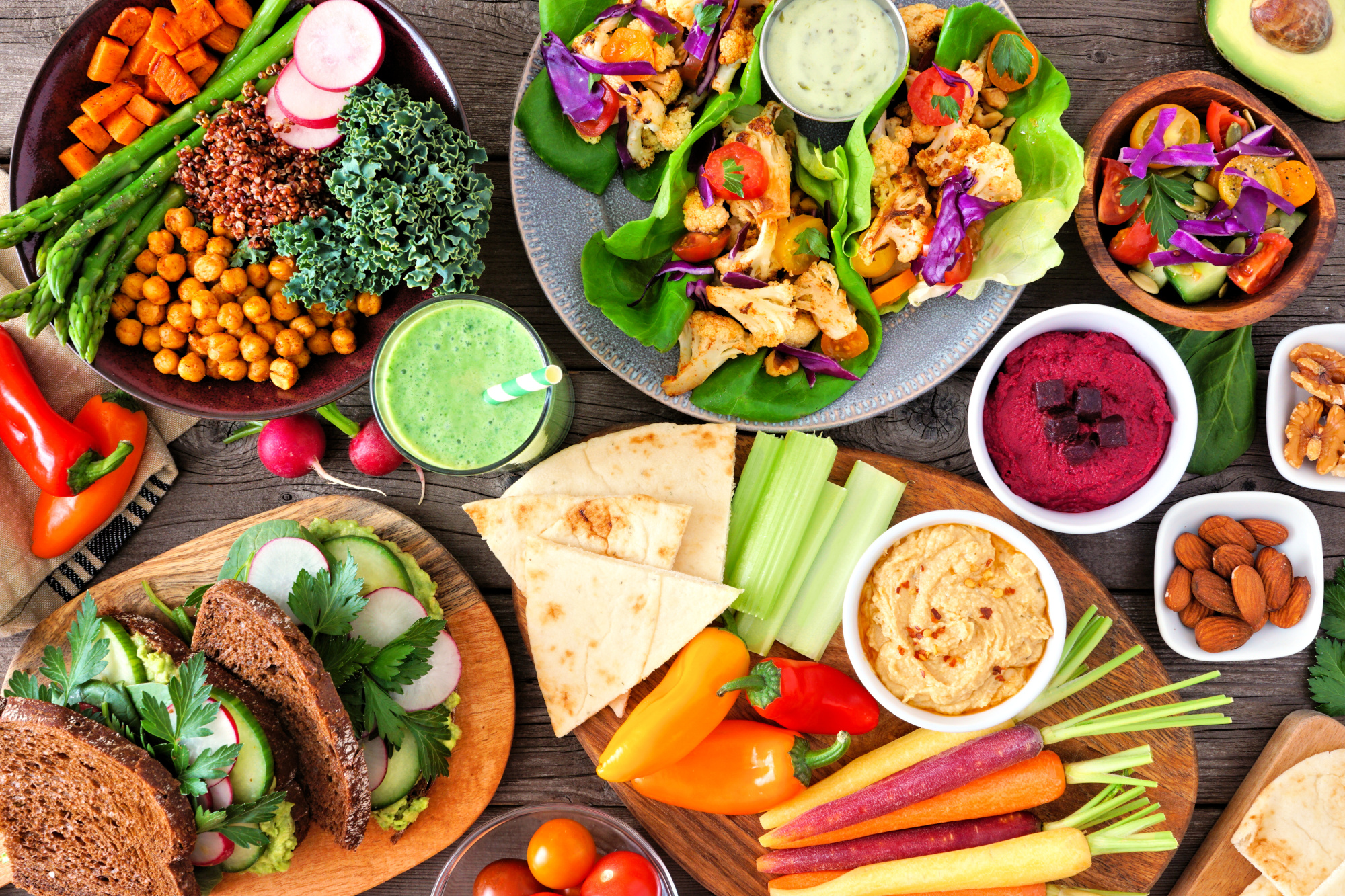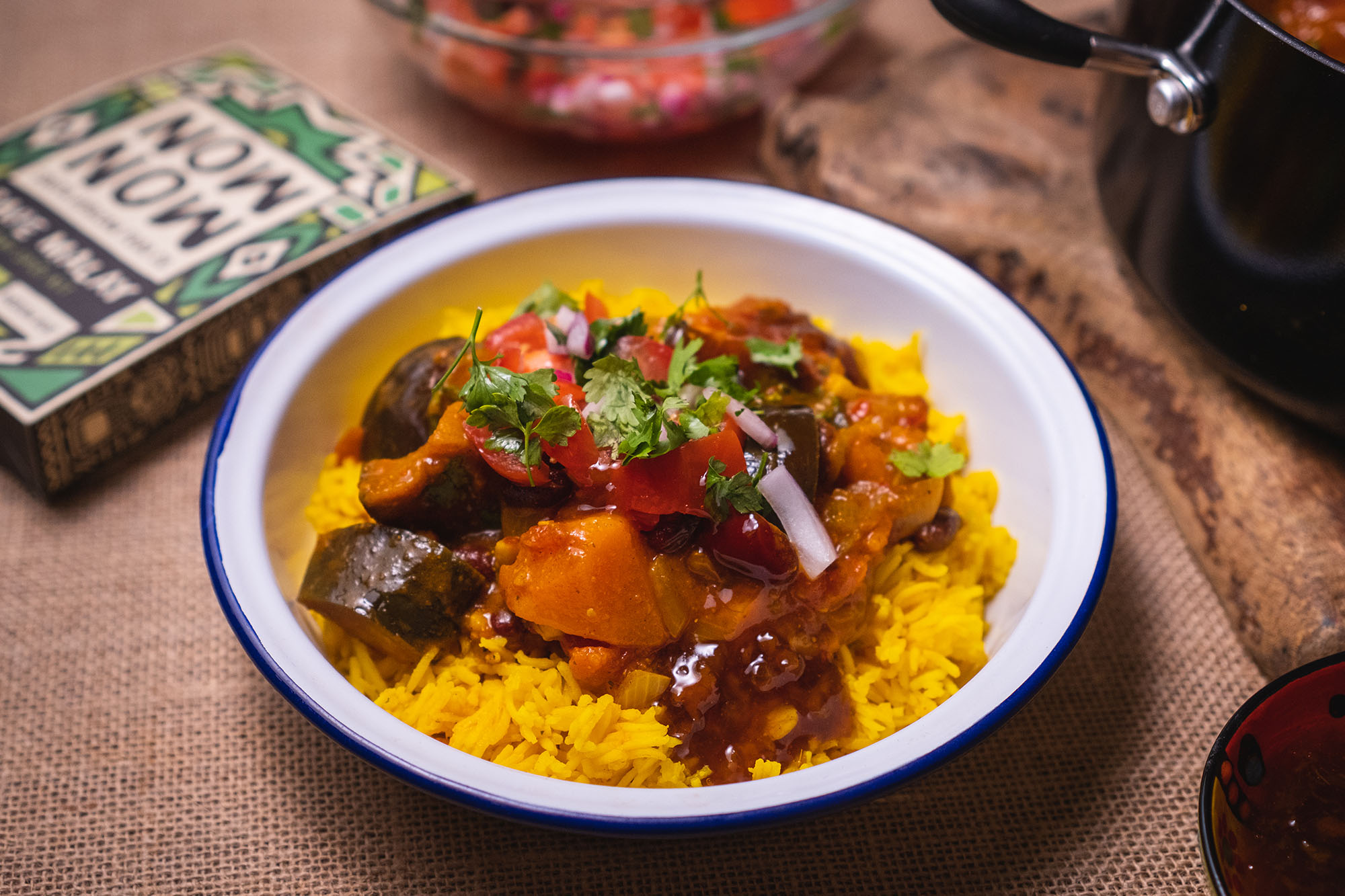In a recent webinar, our expert panel of plant-based professionals gave insights on how ingredient decisions affect the sustainability impact of products. The panel consisted of Rachel Colomeni, the Senior Vice President of Growth and Innovation at HowGood, the world’s largest product-sustainability database, and Emma Yates, who works alongside Rachel as a vital member of HowGood’s Growth and Innovation team.
Some of the key topics covered include:
- How different aspects of a food product’s life cycle affect its overall sustainability.
- Using the HowGood Impact Score to access a product’s sustainability level.
- Mitigating impact from the supply chain.
- How altering one small component of your product – i.e. sourcing location – can improve sustainability and help your company to reach its Environmental, Social and Governance (ESG) goals.
Keep reading for an edited summary of the webinar, or watch the full recording and make sure you don’t miss a thing.
Full recording:
The webinar begins with Emma introducing our current food system, focusing on what consumers are doing. Amazingly, Yates says that a significant 47% of US consumers now identify as flexitarian, with this amount growing all the time. As more people make these types of changes, there are more eyes and ears on the plant-based industry as a whole.
“Because consumers are making these shifts for either moral or health reasons,” says Yates, “they’re expecting the plant-based industry to follow similar values. And when these products prove to be either unhealthy or unethical, they’re even more likely to face criticism than their conventional counterparts.”
Indeed, all too often consumers believe that all it takes to adopt sustainable values in your diet is to switch to consuming plant-based food products. But there’s a little more to it than that, which leads our speakers to ponder: how can brands create a truly sustainable impact and then communicate that transparently to their customers?
With this in mind, the audience is presented with their first question-and-answer poll: What part of a food product’s life cycle has the greatest impact? During the farm stage, transportation, or packaging.
The responses flood in, and, unsurprisingly, the majority are correct: the farm stage.
“A third of global greenhouse gas emissions are derived from our food system,” Yates comments, “and on average 87% of those emissions come from the farm stage. When I first learned this a few years back, I was mind-blown because I’ve often thought about packaging and transportation as these very tangible, heavy contributors to greenhouse gas emissions and other impacts. But from farm production, land use, and animal feed, we’re seeing the bulk of the impact.”
“All of these components that contribute to food production are having an impact on climate change, biodiversity, and our nature system. So, changes can come from that farm stage where we’re tilling into the ground and releasing carbon into the atmosphere, where we’re converting land from forests to cropland, where we’re draining wetlands, and completely changing these environments. We’re also adding synthetic fertilisers, which are releasing carbon into the atmosphere, and livestock, and all these other factors that are affecting the system as a whole.”
Yates goes on to share a concerning finding from NASA, which reports that within the next 10 years, climate change will start to affect the yield of our crops if it has not already.
“Crops like corn could be affected by more than 15%,” she continues. “Certainly, our food system is at a very high stake because of climate change. Going in and changing the way that we look at agriculture could be the key to actually mitigating climate change.”

In addition to looking at our agricultural system to help the planet, we can also look at how changing the way that we look at agriculture and source our food, can actually help our businesses, too.”
Recent point-of-sale data has demonstrated that sustainably marketed products grew 2.7 times faster than conventionally marketed products, and 2.1 times faster in the Consumer Packaged Goods (CPG) Market. What does Yates think?
“COVID was a huge catalyst to this expedited sale, and I assume that we will continue to see this type of trend. Increasingly, we’re seeing how plant-based products are also able to shift demand away from animal-based products; we’re able to appeal to the essential elements that consumers want in their animal-based products, and supply those in plant-based products with new innovations and technologies that we’re seeing in the market.”
Sustainable retail strategies
Find out how to align your environmental and sustainability goals with modern consumer preferences.
Getting started
So where do we begin? How do we really make this change by looking at the farm stage, and actually making our brands better and more sustainable?
Yates explains: “We need to start at the measurement stage. Before we can communicate or really act on those changes, we need to get a baseline to see where our ingredients and products are as a whole. This actually moves us on to our next poll question.”
What is the most important metric to measure when we’re analysing our products? Raw greenhouse gas (GHG) emissions, ingredient processing emissions, water usage, soil health, labour risk, biodiversity, land use, or animal welfare.
Viewers log their responses, and Colomeni joins the conversation.
“The thing that gets me,” she says, “is that there are so many different aspects to this problem. It’s not just carbon or water, it’s how we’re treating the soil and how we’re changing the land. Are we cutting down forests? Are we treating our animals correctly? Are we treating our workers correctly? There are so many things at play.”
“There really are,” adds Yates. “It seems like we’ve finished with the poll. It looks like the one with the most votes is raw GHG emissions, with 38% of the vote.”
Interestingly, things like biodiversity, labour risk, and animal welfare didn’t get much of a look-in from the audience in their votes.
Colomeni continues: “At HowGood, we look at all the metrics because we believe that all of these things – raw GHG emissions, biodiversity, soil health, labour risk, land use, ingredient processing, raw blue water usage and animal welfare – are important.”
HowGood gives each of these core eight metrics an equally weighted score out of 100 by way of producing a HowGood Impact Score.
“We’re trying to make things a bit easier with the HowGood score,” says Colomeni, “because it is a complicated issue. We also use a colour code – red is bad with a low score, and green is good with a high score.”
She adds: “What we’re trying to do at HowGood is show – not only consumers but brands, food-service organisations and growers – steps that people can take to improve their impact on the planet. Steps businesses can take when they’re creating new products, and how they can make changes as time goes by.”
By giving each aspect of a product’s production a score, HowGood is able to look at these eight different metrics and show the impact of each one.
“We’re going to talk more about carbon and water today,” Colomeni says, “but know that our scores are generated based on all eight different metrics. So if you look at an ingredient and wonder, ‘why is that impact score low when carbon and water aren’t too bad?’, it could be because of land-use change, animal-welfare issues, or labour risk, depending on where in the world it has been produced.”
Reducing impact
There are three things that should be considered to reduce impact, Colomeni explains.
“The first is to change your ingredients,” she says. “Could you substitute one ingredient for another? I think we’ve seen a change with this in the last few years, with companies going out of their way to find better ingredients and substitutions, especially in the animal-based food products group.”
“The second part is to change location. If you’re cutting down the Amazon rainforest to grow something, then it’s going to be beneficial to move to a different location! There are certain locations around the world that use different growing standards and are better set up for certain ingredients than others.”
“The third way is to change your agricultural practice or certification. How are you growing your product? Are you using a lot of synthetic fertilisers? Are you Regenerative Organic Certified® (ROC)? All these factors can make a difference when you’re formulating a product or when you’re changing a product. We believe that it is important to understand those changes. And so, if you are shifting, say, to regenerative agriculture – what’s that benefit for you as a company? And what’s the benefit for consumers? We like to think that consumers vote with their dollars and buy better products, and we have seen that. But there is also a huge benefit to companies.”
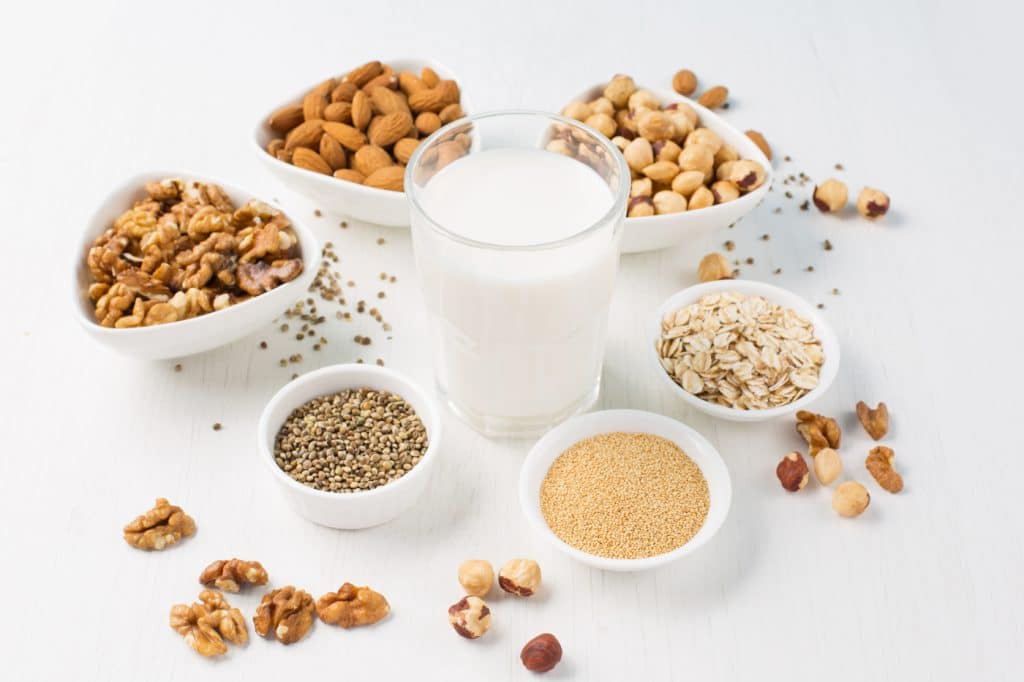
With this in mind, Colomeni shifts the focus to ingredients, using another poll to address the audience.
The poll reads: Which type of milk uses more water in its farm production? Moringa oat milk from California, cow’s milk sourced from India, or organic cow’s milk from Florida.
After a few seconds, Colomeni reveals the option chosen by the audience: organic cow’s milk.
However, the data shows that the correct answer is more complicated. While conventional cow’s milk has both the lowest (worst) HowGood impact score (43 out of 100) and the highest (worst) carbon footprint (1.6 kilograms of CO2 equivalent), it uses less water than oat milk, which has a much higher, better HowGood Impact Score (76) and a lower (better) carbon footprint (0.26 kilogrammes of CO2 equivalent). Oat milk uses 882.8 cubic metres of water per tonne, whereas cow’s milk uses 503.9 cubic metres of water per tonne, while organic milk uses only 107.7 cubic metres of water per tonne. Why is that?
Colomeni explains: “That’s because it was grown in California where they don’t have a lot of water, and so they’re having to irrigate. That’s a problem. When you think about these different things you’ve really got to consider location. The conventional milk was produced in India where there’s also not much water.”
There are so many metrics, and we need to understand how they interplay when we’re formulating a product or choosing ingredients to put into our final product.”
The issue is, indeed, not as black and white as most people would believe. It uncovers the importance of not automatically opting for plant-based ingredients sourced from anywhere in the world, simply because you believe that they are more sustainable, because where you source those ingredients from might not be sustainable at all!
Making changes
Yates opens the next part of the conversation by presenting HowGood’s breakdown of the production impact of a gluten-free honey nut cereal.
“Looking at the HowGood impact score,” she says, “we can see that this cereal ranks better than 75% of the cereal industry and has a moderate carbon footprint. And we can see those eight core metrics for that entire product up here at the top of my screen. When we look at the colour map for the cereal’s ingredients down at the bottom, we can safely assume that whole-grain oat flour is probably the largest ingredient by volume. So, if we wanted to improve this product, it would make sense to start with the ingredient that has the biggest impact on the product. So, we can go in and experiment with how different ingredients, locations, and sourcing standards will affect the impact of our product as a whole.”
Yates continues: “If we change our ingredient to cassava flour, for example, we’ll see improvements or less impact through GHG emissions or [diminishing] soil biodiversity, labour risk, and land use. Maybe we want to try another ingredient, like Tamriel flour. We’ll see even greater improvements across areas like labour risk and land use and biodiversity. It could be that we want to improve on sugar, which is maybe the second most impactful ingredient. Perhaps we’re not comfortable changing the actual ingredient, but we are open to changing the sourcing location and going to a new supplier. By simply making the switch from the Dominican Republic to Florida, we’ll see massive improvements in water usage, soil, biodiversity, labour risk, and land use. We can update that and see how these improvements affect our product as a whole.”
Yates explains that if a business was happy with these research-and-development (R&D) changes, they could use HowGood to go through the operations that would come with initiating them and making a new product.
“And then we can analyse the benefit of making changes,” she adds. “By looking at one simple metric, like the decreased land use of making that switch from wholegrain flour to Tamriel flour, we were able to save 385 square metres of land per tonne for that single ingredient. You can imagine the major impact you could have if you were a major CPG (consumer packaged goods) producer making these types of changes across the board!”
Top tips to formulate sustainable plant-based products
Discover more tips on how brands can formulate truly sustainable plant-based products and communicate transparently to their customers in this New Food Opinions piece from the HowGood team.
Q&A
Where does HowGood get its data from and how often is it updated?
In response to this question, Yates explains that HowGood’s data is pulled from more than 600 sources, including published life-cycle assessments, non-governmental organisations (NGOs) and other types of published research.
“The data is updated quarterly, bi-annually and on an annual basis,” she says, “depending on how often specific publications are updating their own data.”
“We’ve got a large research team,” Colomeni adds, “who constantly research each ingredient, location, and growing practice, all around the world. It’s not a US or an EU database – it’s global. So we’re bringing in actual numbers that have been peer-reviewed and proven and pulling them into our database and really understanding the impact and interplay between different ingredients.”
Are there any common mistakes brands make when they’re trying to either measure their sustainability or make changes to their product to become more sustainable?
Yates responds: “We get a lot of brands wanting to go right to making sustainability claims and telling a big story before they’ve understood their actual baseline. And typically, once we take them through the cycle and say, ‘we’re gonna start with measuring because you have to before you can report’, it opens up this whole box of innovation and potential. It’s almost like they didn’t even realise that this step was possible and that they could make changes in their portfolio, which is really exciting.”
If you have more questions for the HowGood team, get in touch at [email protected].
Key takeaways
Throughout the webinar we learned the following key insights from our panellists:
- To make assessments based on sustainability, all aspects, and components of a product’s lifecycle need to be considered – raw GHG emissions, biodiversity, soil health, labour risk, land use, ingredient processing, raw blue water usage, location, and animal welfare. Only once all these things have been analysed, can we make accurate decisions about a product’s sustainability levels – and improve them.
- Sustainability metrics are closely interconnected. We need to bear in mind all of the above when we’re formulating a new product or choosing ingredients to put into a product.
- Location is important. If you source an ingredient for a product from a poor location (affected by things like bad farming practices, low water levels, etc) then that ingredient will not be sustainable and will bring down your entire product’s sustainability levels, even if its other ingredients are extremely sustainable.
If you want more insight and advice on improving the sustainability of your product and/or company, make sure to get in touch with ProVeg at [email protected]. Keep an eye out for the next webinar in the series, and don’t waste any time in finding out the ways you can accelerate your company’s transition to net zero, increase your profits, and help to build a better world.
